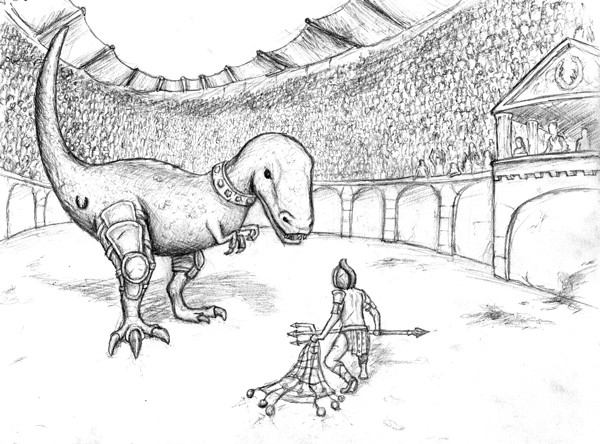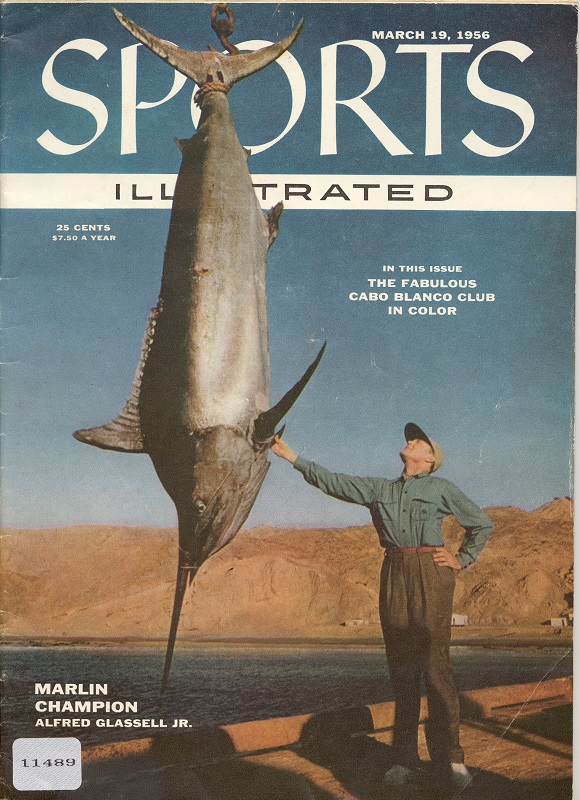We’ve all heard of the notorious classified ads. Whether you think the stories emanating from those newspaper columns are romantic or creepy, it can’t be denied that they are interesting to hear about. Here at HMNS we have missed connections everywhere. But I don’t mean human connections, or a least living human connections…
The connections that will be discussed in our new series Missed Connections are between artifacts in our various collections. We will discuss connections between our Hall of Gems and Minerals and our Hall of Ancient Egypt, between our Hall of Paleontology and our Hall of the Americas, and many more; connections that the average patron visiting our halls may never suspect. Some of them may sound far fetched, but the Earth is a small place and everything that rests on the limited reaches of its surface is bound to be intimately connected in one way or another. This week we will discuss the the rock-solid relationship between our Hall of Paleontology and our new special exhibit: Gladiators: Heroes of the Colosseum.
It may sound far-fetched, but the history of gladiators and the study of paleontology are intimately intertwined. How so? Well, when you look at the Colosseum, you are looking at a VERY well constructed pile of stones. The stones used to build the Colosseum include travertine, limestone, marble and tuff. Most of these stones were quarried in what is now present day Italy and it is the close proximity and also the ease with which these stones can be quarried that encouraged the Romans to use them so often.
Travertine and marble are basically different forms of limestone (marble is the metamorphic form and travertine is formed by the unique conditions of hot springs). Limestone is basically defined as any rock that is composed mostly of calcite (calcium carbonate), so there are many different varieties of limestone all with varying degrees of hardness and density. Different forms of the stone would have been used for different purposes in ancient structures depending on their unique structural and decorative value. The calcium carbonate in these stones is where the fossil connection comes into play. Calcium carbonate is the principle building material for most marine shellfish and corals. The animals extract the ingredients for the chemical from the salt water around them and secrete it to make their shells. When they die, their bodies fall to the bottom of the ocean and after millions of years of burial and exposure to heat and pressure underground they form limestone.
So, you could say that limestone is mostly composed of dead bodies. Because limestone is an organic sedimentary rock, it reacts with acids, including carbonic acid which is created when carbon dioxide gas is dissolved into rain water. All rain water is somewhat acidic because of gases it picks up in the atmosphere. Due to this, over the last 2,000 years every spring shower has eaten away a little bit of the beautiful marble and travertine decorations of the Colosseum.
Take a look at some of the decorative elements from the Colosseum featured in our new special exhibit: Gladiators: Heroes of the Colosseum:
You’ll notice that all of the pieces are fragmentary; this is because of human action, which worked much more swiftly than exposure to the natural elements to degrade the venerable structure. The Colosseum was pillaged for building material for 1,000 years until 1749 when Pope Benedict XIV finally forbade the removal of stones from the structure and made the site a memorial to the Christian martyrs who were executed there.
You’ll also notice that these pieces are heavily weathered. This is due to exposure to the elements, especially rain, as discussed previously. When dealing with ancient monuments like this, governments are often faced with the conundrum that if they leave beautiful architectural elements outside they will continue to wear. Conversely if they bring them indoors, historical structures can lose a vital archaeological element that allows visitors to connect to its past.
Since limestone forms in shallow marine environments (where the shell-building creatures and coral live), dinosaurs aren’t found fossilized in limestone, but many of their contemporary fish-eating relatives, like Pterasaurs, are. Limestone quarries that have been yielding building stones for centuries, like ones near Solnholfen, Germany are now important sources for new paleontological discoveries. Although the quarries that supplied the builders of the Colosseum are not known to produce very many large animal fossils, the limestone itself is made of millions of tiny fossilized sea creatures. Because the organically produced material that constitutes the stone is reacting with acidic rain, it’s almost like those little ancient sea creatures are seeking their revenge from beyond the grave. So it’s not too much of a stretch to say that our Roman ruins are fighting the curse of their fossiliferous origins every day. Next time you look at a picture of the Colosseum, remember that it’s not just a man-made marvel, but a monument to past life’s ever-present effect on the modern world.
And don’t forget to check out our new special exhibit: Gladiators: Heroes of the Colosseum!












